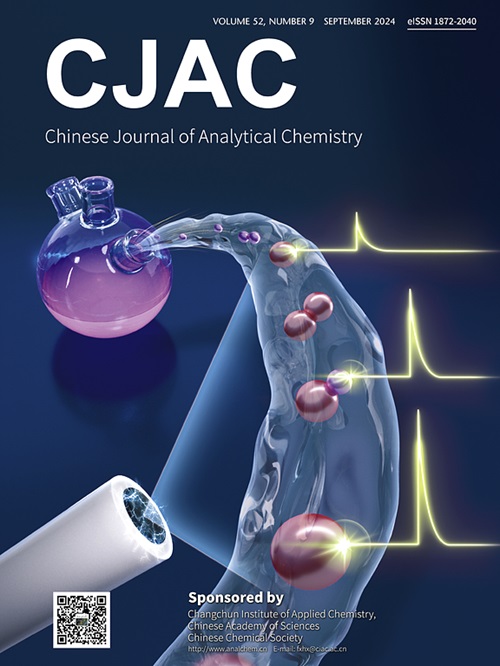新型环保动力学分光光度法分析阿奇霉素剂型和加标血浆
IF 1.3
4区 化学
Q4 CHEMISTRY, ANALYTICAL
引用次数: 0
摘要
通过二水合阿奇霉素(AZT)与1,2-萘醌-4-磺酸钠(NQS)在碱性介质中的反应,建立了一种新的定量阿奇霉素剂型和血浆动力学技术。在452nm处测定吸光度随时间的增加,形成稳定的产物。采用4种动力学方法对AZT进行测定,其中初始速率法和固定时间(20 min)法在浓度范围为1.50 ~ 30.00和1.50 ~ 33.00 μg/mL范围内最适合绘制校准图,检出限分别为0.023和0.018 μg/mL。对反应的Ea、ΔH‡、ΔS‡和ΔG‡进行了评估,分别为8.177 kJ/mol、5.742 kJ/mol、-198.34 J/K mol和64.846 kJ/mol。将所建议的动力学方法应用于市售制剂和人血浆中AZT的测定,通过使用绿色和白色的工具,发现比已有的BP方法更具可持续性、环保性、效率和实用性;AES, AGREE, AGREEprep, GAPI和RGB,使其成为更安全的替代方案。本文章由计算机程序翻译,如有差异,请以英文原文为准。

Eco-friendly new kinetic spectrophotometric method for analysis of azithromycin in dosage forms and spiked human plasma
A new kinetic technique to quantify azithromycin in dosage forms and plasma was interesting through the reaction of azithromycin dihydrate (AZT) with 1,2-naphthoquinone-4-sulphonate (NQS) in an alkaline medium. The formed stable product was followed by measuring the increased absorbance with time at 452 nm. Four kinetic procedures were applied for the determination of AZT, the initial rate and fixed time (at 20 min) methods are the most suitable for plotting the calibration graphs in the concentration ranges 1.50–30.00 and 1.50–33.00 μg/mL with detection limits of 0.023 and 0.018 μg/mL, respectively. The Ea, ΔH‡, ΔS‡, and ΔG‡ are evaluated for the reaction and found to be 8.177 kJ/mol, 5.742 kJ/mol, –198.34 J/K mole, and 64.846 kJ/mol, respectively. The suggested kinetic methods were applied to determine AZT in marketed formulations and spiked human plasma, and were found to be more sustainable, eco-friendly, efficient, and practicable than the reported BP method, by applying green and white tools; AES, AGREE, AGREEprep, GAPI, and RGB, making it a safer alternative to be considered.
求助全文
通过发布文献求助,成功后即可免费获取论文全文。
去求助
来源期刊
CiteScore
3.60
自引率
25.00%
发文量
17223
审稿时长
35 days
期刊介绍:
Chinese Journal of Analytical Chemistry(CJAC) is an academic journal of analytical chemistry established in 1972 and sponsored by the Chinese Chemical Society and Changchun Institute of Applied Chemistry, Chinese Academy of Sciences. Its objectives are to report the original scientific research achievements and review the recent development of analytical chemistry in all areas. The journal sets up 5 columns including Research Papers, Research Notes, Experimental Technique and Instrument, Review and Progress and Summary Accounts. The journal published monthly in Chinese language. A detailed abstract, keywords and the titles of figures and tables are provided in English, except column of Summary Accounts. Prof. Wang Erkang, an outstanding analytical chemist, academician of Chinese Academy of Sciences & Third World Academy of Sciences, holds the post of the Editor-in-chief.

 求助内容:
求助内容: 应助结果提醒方式:
应助结果提醒方式:


